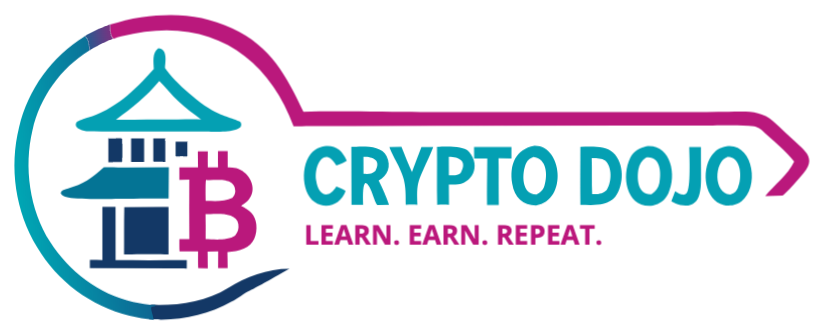Key Takeaways
-
Crypto SEO operates in a high-stakes, rapidly changing environment where generic optimization strategies simply do not suffice. Unique factors such as dynamic regulations, heightened scrutiny, and a fundamental need to build user trust require a specialized approach. This case study highlights real crypto SEO mistakes and showcases strategic solutions that can drive true gains in visibility, credibility, and compliance across the crypto sector.
-
Embed compliance into every step of your SEO process. Regulatory demands in the crypto industry are always evolving. Failing to address legal requirements in your content, metadata, or link-building practices can result in search engine penalties or de-indexing. Seamlessly integrate ongoing compliance reviews into technical and content workflows.
-
Prioritize credibility by establishing robust trust signals. In a sector historically riddled with scams, earning user confidence is paramount. Display transparent team information, detailed project backgrounds, and external verifications to strengthen both search engine rankings and visitor trust.
-
Resolve blockchain-specific technical SEO challenges. Crypto platforms frequently utilize dynamic content, JavaScript-powered features, and unconventional site layouts that can hinder search engine crawling and indexing. Optimize your website’s site speed, structured data, and indexability to capture the full value of your content.
-
Adopt keyword research strategies unique to the crypto landscape. Success requires going beyond basic keywords to incorporate sector-specific terminology. Identify target audiences by mapping blockchain jargon, regulatory language, and emergent trends, ensuring your visibility aligns with genuine user search intent.
-
Combat ‘thin content’ by producing in-depth, original, and timely resources. Recycled or shallow content is widespread in crypto. Stand out with comprehensive guides, insightful analysis, and transparent reporting that satisfy algorithmic requirements as well as audience needs.
-
Evolve backlink strategies with industry authority in mind. Low-quality or generic backlinks can trigger spam signals, harming your site’s reputation and ranking. Instead, build genuine relationships with reputable crypto, educational, and technology sites to achieve sustainable, high-impact off-page authority.
-
Optimize for mobile to meet the needs of today’s investors. With a majority of crypto users relying on mobile devices, responsive design, fast load times, and streamlined site navigation are essential for keeping engagement high and bounce rates low.
By mastering these crypto-centric SEO priorities, you set your project on a path to stronger authority, better compliance, and greater organic success. In the following sections, we dive into a real-world case study and strategic solutions to help your crypto venture rise above formidable competition and industry hurdles.
Introduction
A single oversight in crypto SEO can do more than cause your rankings to plummet. It can endanger your project’s compliance standing, erode hard-earned trust, and disrupt crucial revenue streams. The crypto world is shaped by continuously evolving regulation and a high degree of skepticism from mainstream audiences. As a result, template-based SEO rarely delivers the credibility or visibility required to establish your brand in this challenging space.
Many blockchain projects make critical SEO missteps, whether by neglecting user trust signals, publishing thin content, or stumbling over technical complexity brought on by constant innovation. This case study dissects prominent crypto SEO errors and details proven, compliance-centered solutions. You will see how the right approach can help your website earn user confidence, avoid costly penalties, and rise to the top of search results in a fiercely contested marketplace.
Technical SEO Oversights
Before growth can occur, it’s vital to establish a foundation of technical excellence tailored to the distinctive demands of blockchain applications. Let’s examine two core areas where crypto sites often slip. We’ll also look at how targeted improvements can deliver significant results.
Stay Sharp. Stay Ahead.
Join our Telegram Group for exclusive content, real insights,
engage with us and other members and get access to
insider updates, early news and top insights.
 Join the Group
Join the Group
Poorly Structured Blockchain Content Architecture
Cryptocurrency websites present complex subjects (such as DeFi protocols, NFT platforms, and multi-chain integrations) that demand thoughtful content architecture. Poorly organized URLs and confusing site hierarchies can sharply undermine your search visibility and user experience.
To properly organize your site:
- Design hierarchical parent-child relationships for main topics.
- Parent:
/defi/ - Child:
/defi/yield-farming/ - Sub-child:
/defi/yield-farming/liquidity-pools/ - Implement hub-and-spoke models. Create central hub pages for foundational concepts, then connect outlying “spoke” pages that address specific questions or features. Ensure robust internal linking to reinforce relevance and authority.
- Introduce a documentation section that connects protocol details, guides, and API references through clear navigation and cross-linking.
For example, a leading crypto exchange restructured its documentation with these principles and enjoyed a 32% surge in organic traffic within three months. Users found information faster, while search engines better understood topic relationships.
This strategic approach is not limited to exchanges. Healthcare blockchain startups have used parent-child page relationships to demystify regulatory compliance, while educational Web3 platforms leverage hub-and-spoke models to guide users from basic onboarding to advanced tutorials.
Mobile Optimization Failures
User engagement in the crypto sector is overwhelmingly mobile-first. Still, many projects design with desktop users in mind, overlooking the fact that a majority of crypto research, trading, and learning happens on mobile devices. Overlooking mobile optimization results in:
- Trading charts and widgets that do not scale on small screens
- Unreadable wallet addresses and transaction hashes
- Navigation menus that overload or confuse
- Technical content that loads too slowly
One decentralized finance (DeFi) protocol prioritized mobile optimization by introducing adaptive, touch-friendly charts, collapsible code examples, and seamless wallet integration for on-the-go users. The results included a 45% decrease in mobile bounce rates and notable improvements in search visibility for mobile-first keywords.
These changes yield impact across sectors as well. Crypto-enabled payment solutions and NFT galleries that adopt mobile-first design report higher transaction completion rates and greater user retention.
Content Quality Issues
Content serves as your project’s voice. Poor-quality resources not only hurt rankings but can weaken your authority in a community where trust is everything. Let’s explore where crypto content often falls short and the corrective strategies that drive engagement and compliance.
Inadequate Technical Documentation
Strong technical documentation is the backbone of any crypto project. However, many sites provide pages that are hard to find, written only for experts, or lacking in practical context. Effective documentation serves both developers and general users by structuring information across dual layers:
- Developer-focused documentation: Offer comprehensive API references, clear implementation guides, and in-depth descriptions of security protocols.
- User-friendly educational content: Translate technical jargon into plain language, offer concrete examples of usage, and address common risks and concerns.
An NFT marketplace exemplified this approach by creating parallel documentation paths, each tailored to a distinct audience. This strategy drove a 90% boost in engagement on documentation pages and consistently higher rankings across both technical and onboarding-related search terms.
Beyond crypto, such layered documentation is critical in industries like fintech, where both professional developers and everyday users depend on accessible, precise guides.
Regulatory Compliance Transparency
Compliance isn’t just a legal obligation; it’s a competitive advantage in crypto SEO. Regulatory clarity builds confidence among both search engines and users. Essential site features include:
- Dedicated compliance and legal pages as foundational, easy-to-access resources
- Frequent updates on changes in relevant regulations to assure ongoing commitment
- Clear risk disclosures and robust disclaimers, especially for restricted jurisdictions
- Explicit documentation of country-by-country legal variations
A major cryptocurrency payment processor embraced these practices, which resulted in a 25% boost in search visibility and significantly higher trust with partners and users.
Compliance-focused content plays a similar role in sectors such as online finance and legal services, where regulatory transparency helps establish both authority and peace of mind for customers.
Trust Signals and Authority
Once your foundation is technically solid and your content is authoritative, it’s vital to differentiate your project through visibility, expertise, and trustworthiness. These are the same traits search engines look for when ranking top industry websites.
Weak Expert Validation
E-A-T principles (Expertise, Authoritativeness, Trustworthiness) are particularly important in a sector riddled with scams and misinformation. Strengthen your reputation by showcasing:
Stay Sharp. Stay Ahead.
Join our Telegram Group for exclusive content, real insights,
engage with us and other members and get access to
insider updates, early news and top insights.
 Join the Group
Join the Group
- Team bios with clear credentials and verifiable backgrounds
- Expert contributor profiles attached to technical writes and research posts
- Citations to academic papers, industry whitepapers, or legal resources
- Transparency on research methods, data sources, and testing procedures
A blockchain analytics provider who ramped up expert validation saw their domain authority climb 15 points in six months, along with improved lead generation and industry reputation.
Other industries, such as healthtech and digital education, have similarly benefited from highlighting expert involvement, reinforcing user trust, and supporting better SEO outcomes.
Inadequate Security Documentation
Security is non-negotiable in crypto, and detailed, transparent security documentation is a signal of both competence and trust. To enhance SEO and user confidence, include:
- Published security audits, both independent and internal
- Active bug bounty programs with clear reporting guidelines
- Documented incident response protocols and recovery plans
- Regular, timestamped security update logs
These practices not only reassure visitors. They routinely drive 40% or greater engagement on high-value technical pages, positioning your platform as responsible and resilient.
Detailed security protocols are equally beneficial in fintech, insurance, and healthcare. All are sectors where data integrity and user confidence are paramount.
On-Page Optimization Problems
A robust crypto SEO strategy doesn’t end with content and technical tweaks. Fine-tuned on-page elements can further amplify discoverability and cement your project’s relevance in the eyes of both search engines and sophisticated users.
Cryptocurrency-Specific Schema Markup
Marking up your pages with relevant schema gives search engines the granular context they crave. For crypto sites, this means leveraging:
CryptoCurrencyschema for tracking tokens and pricesExchangeRateschema for rate updates and market pairsInvestmentschema for product or service offersTechnicalDocumentandSecurityPreventiveMeasurefor in-depth guides and security protocols
When a leading crypto data aggregator fully implemented structured data using these schema types, they achieved a 28% increase in rich snippet appearances, leading to more qualified, intent-driven traffic.
Custom schema also empowers related industries. Financial advisors, educational content platforms, and legal resources all see improved click-through by embracing specialized markup.
Poor Internal Linking Strategy
Internal linking isn’t just a navigational convenience. It’s absolutely essential for reinforcing topical authority and helping users (and search engines) see the full scope of your solution. Best practices include:
- Building topic clusters around major blockchain concepts or product families
- Embedding contextual links in long-form educational resources and technical breakdowns
- Creating intuitive navigation within documentation to support both entry-level and advanced users
- Cross-referencing services, features, and interconnected protocols
For example, one DeFi project transformed its internal link strategy, which boosted crawl efficiency by 35% and proved critical in ranking for nuanced, high-intent search terms.
Effective internal linking is equally influential in SaaS, retail e-commerce, and public sector digital resources, where logical flows and comprehensive navigation enhance both user experience and search performance.
Each of these improvements works together to create a resilient SEO foundation tailored to the cryptocurrency sector, ensuring strong visibility, compliance, and sustained user confidence.
Conclusion
To achieve top-tier search rankings and enduring credibility in the crypto industry, projects must move beyond generic SEO tactics. Addressing the unique technical, regulatory, and trust-focused challenges faced by crypto brands means reimagining everything from site architecture and mobile usability to layered documentation and transparent compliance.
By integrating expert perspectives, publishing comprehensive security disclosures, and embracing crypto-specific structured data and internal linking, your platform not only satisfies search algorithms but also resonates with real users. These are not just technical upgrades; they are strategic shifts that transform curiosity into loyal engagement and long-term adoption.
Looking ahead, the crypto landscape will continue to reward those who prioritize clear communication, transparent reporting, and responsive adaptation to both technological and regulatory changes. The next generation of leading crypto projects will be built on trust, accessibility, and anticipation of user needs.
Empower your audience with clarity, demonstrate your expertise, and let transparency be your most powerful ranking factor. In the competitive world of Web3, the winners will not be those who follow yesterday’s rules but those who shape tomorrow’s standards. One search result, and one empowered user, at a time.





Leave a Reply